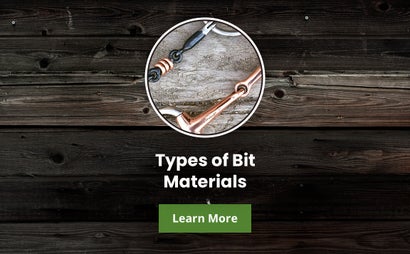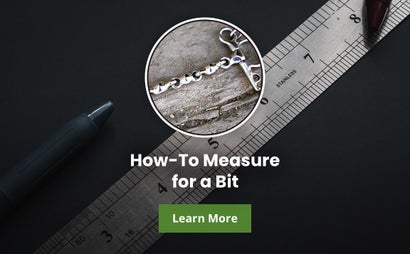A Bit on Bitting:
Measuring for a Bit
Five Easy Steps for Measuring Your Horse's Mouth
Properly fitting a bit to your horse is essential because it allows you to communicate effectively. An improperly fitting bit can also be painful for the horse, as it can pinch and rub the sides of the mouth. That's why we've created this easy how-to guide, so you can always find the correct bit size for your favorite equine friend.
Things to Consider Before Measuring
-
- The length of the mouthpiece is measured from cheekpiece to cheekpiece and is typically taken in inches.
- The width, or thickness, of the bit is measured in millimeters and is taken at the widest part of the mouthpiece, typically next to the cheekpiece.
- Eggbutt and D-ring snaffles should rest comfortably against the outside of the horse's lips, while loose-rings should have an extra 1/8" to 1/4" to prevent pinching.
- Bits that are 1/2" wider than the horse's mouth will have too much movement side-to-side and may rub or cause discomfort.
5 Easy Steps for Measuring
1. In order to measure your horse for a bit, you must first find a measuring device. Commercial devices are available to purchase, however, you can make your own by using a piece of heavy string or a smooth stick.
2. If you use a homemade device, mark one end of it so you have a starting point.
3. Ask your horse to take the device in his or her mouth.
4. Hold the device on one side of the horse's mouth, where it was marked. Then use your other hand to mark the opposite side of the device where it meets the horse's lips.
5. Take the device out of the horse's mouth and measure the distance between the two marks. This measurement will correspond to your horse's bit size. If the result is between sizes, we recommend sizing up.
| Shop Riding Warehouse's Horse Bits |
Closing Thoughts
It's always a good idea to check with your veterinarian or equine dentist to find out if your horse has any abnormal anatomy, such as a large tongue or low palate. These abnormalities may restrict the mouthpiece width or port height you choose.
For more information on bits, please see our other bit guides on cheekpieces, mouthpieces, bit materials, show-legal bits, and bit and mouth anatomy.





